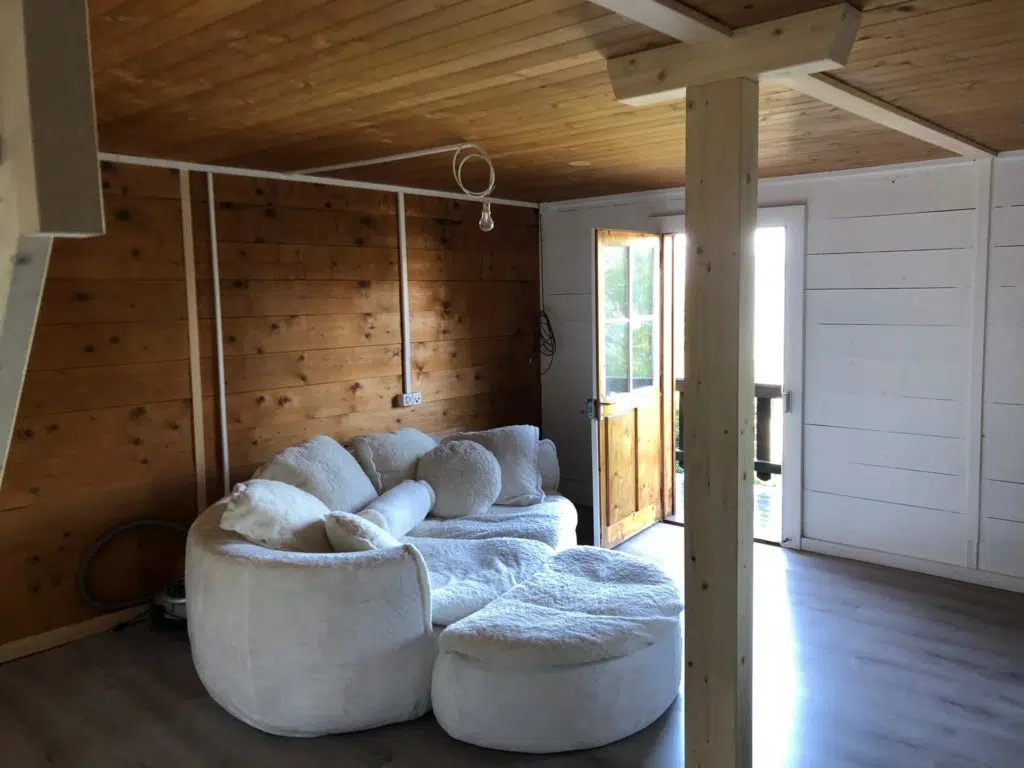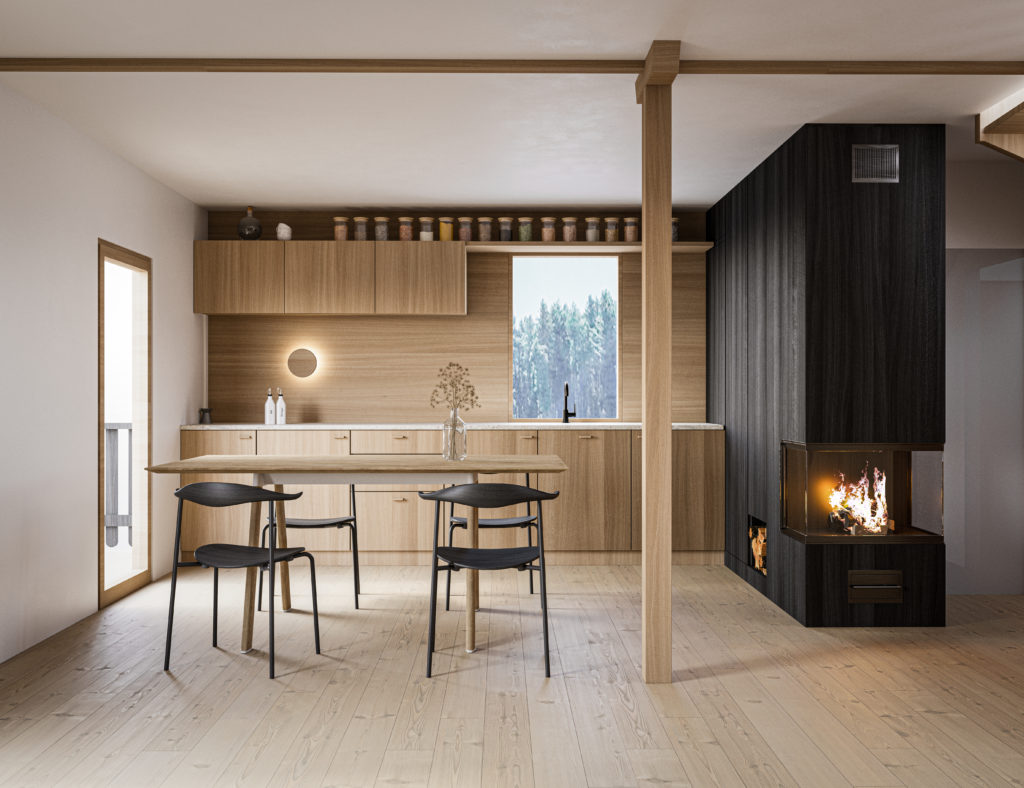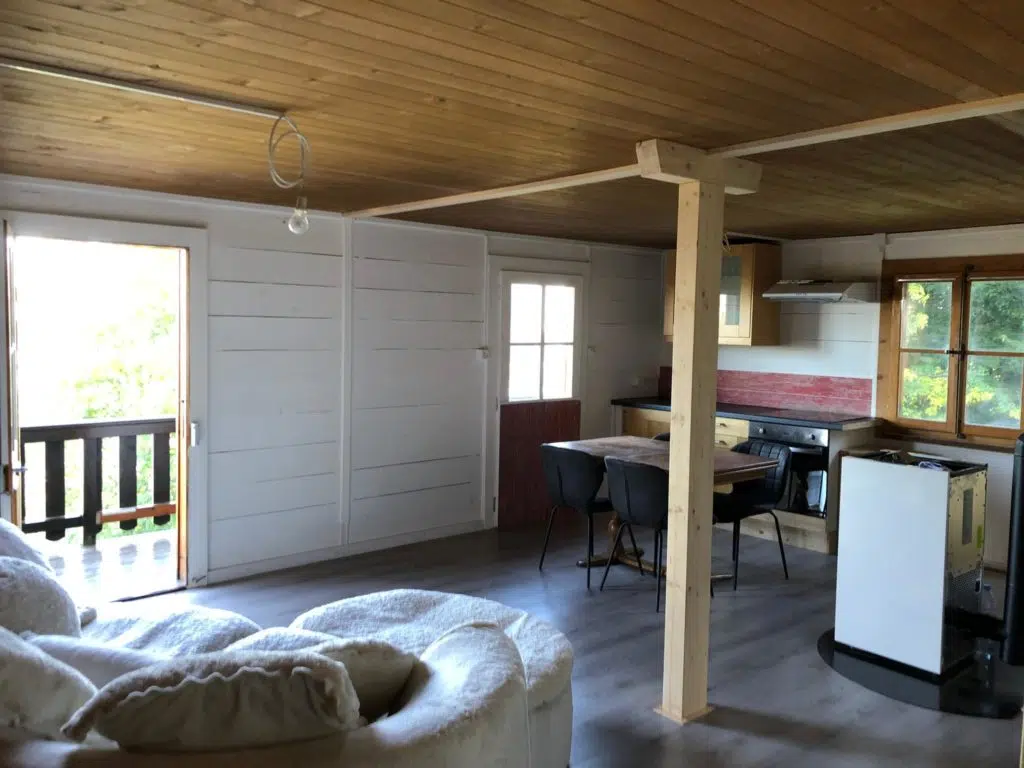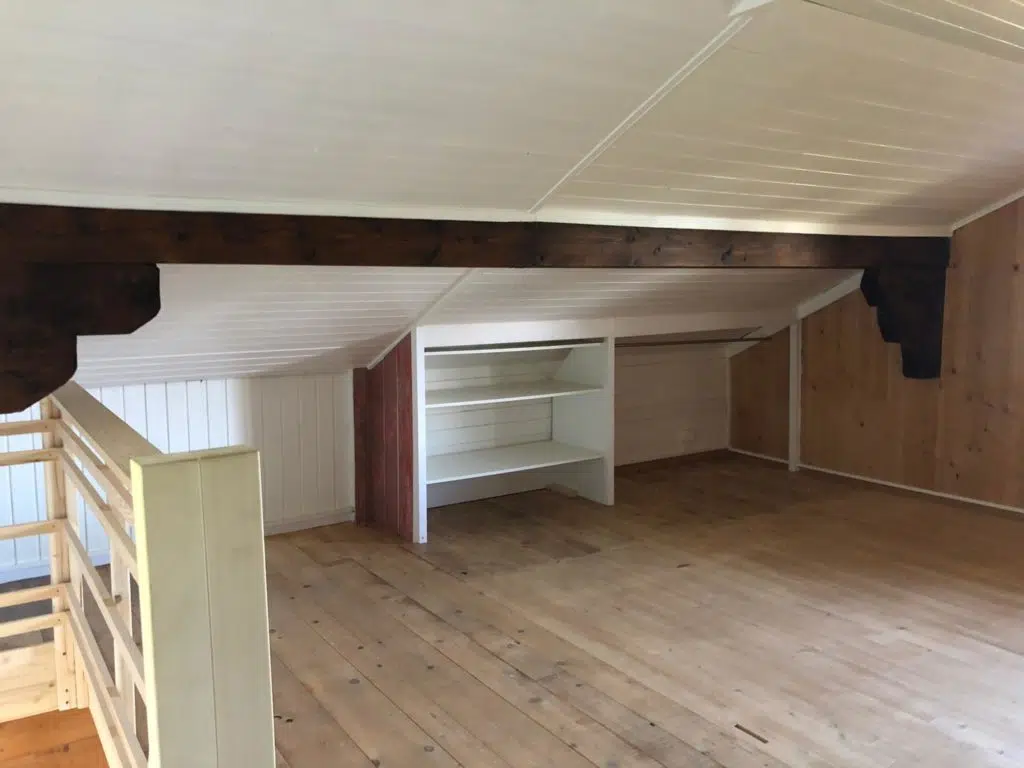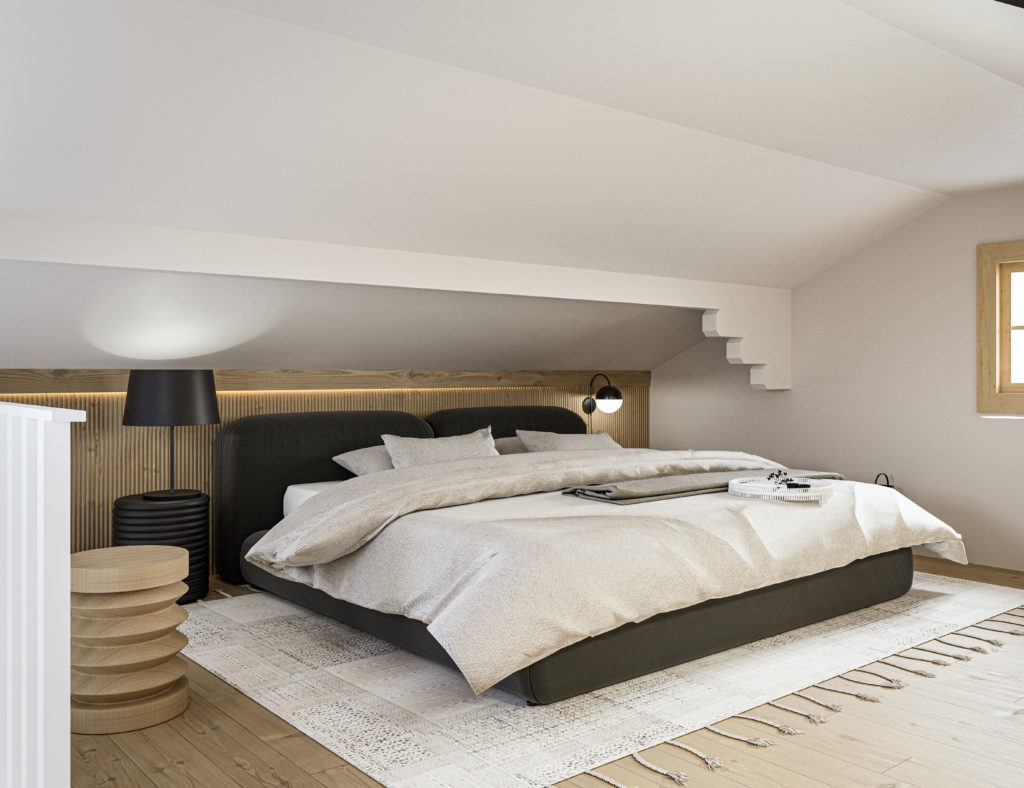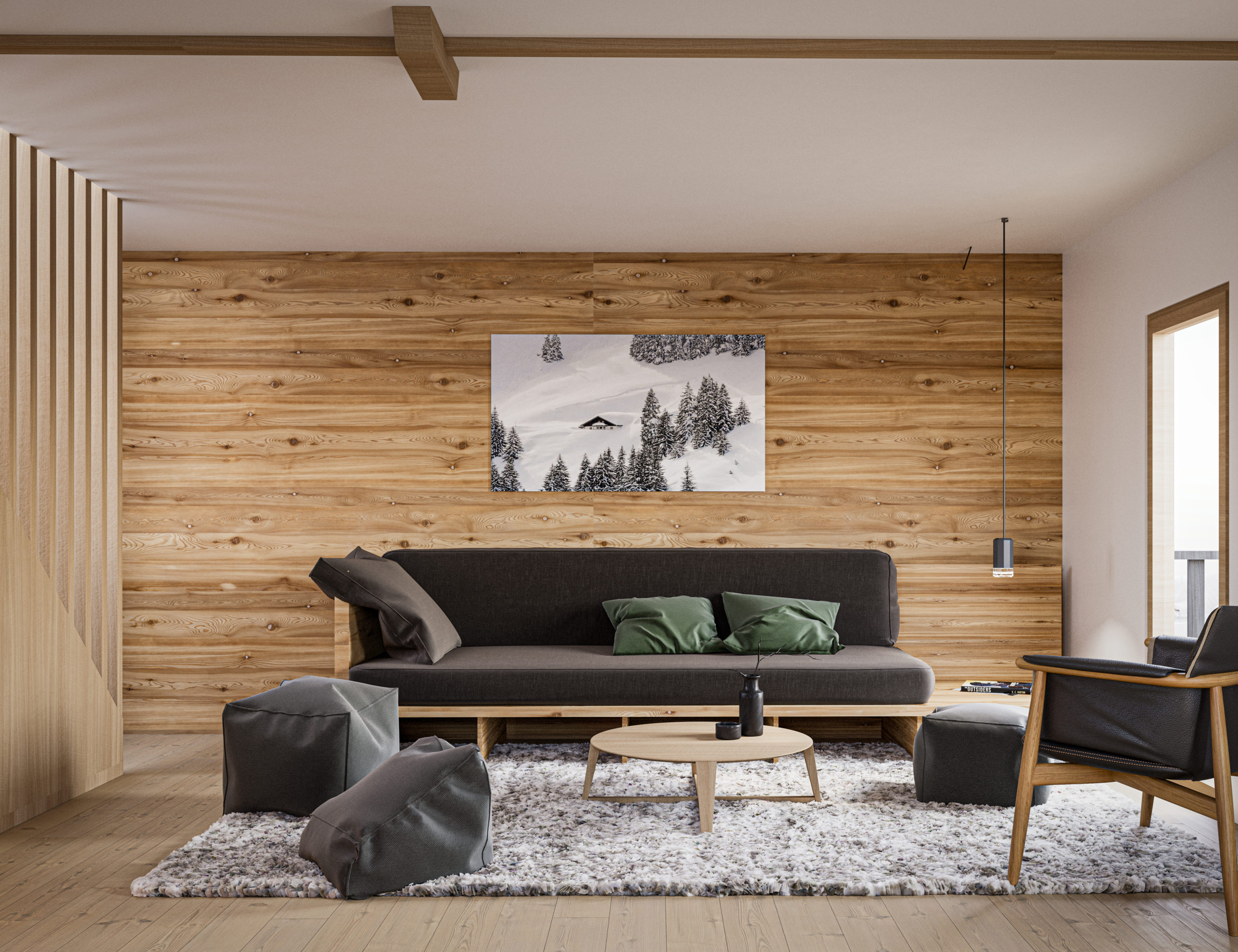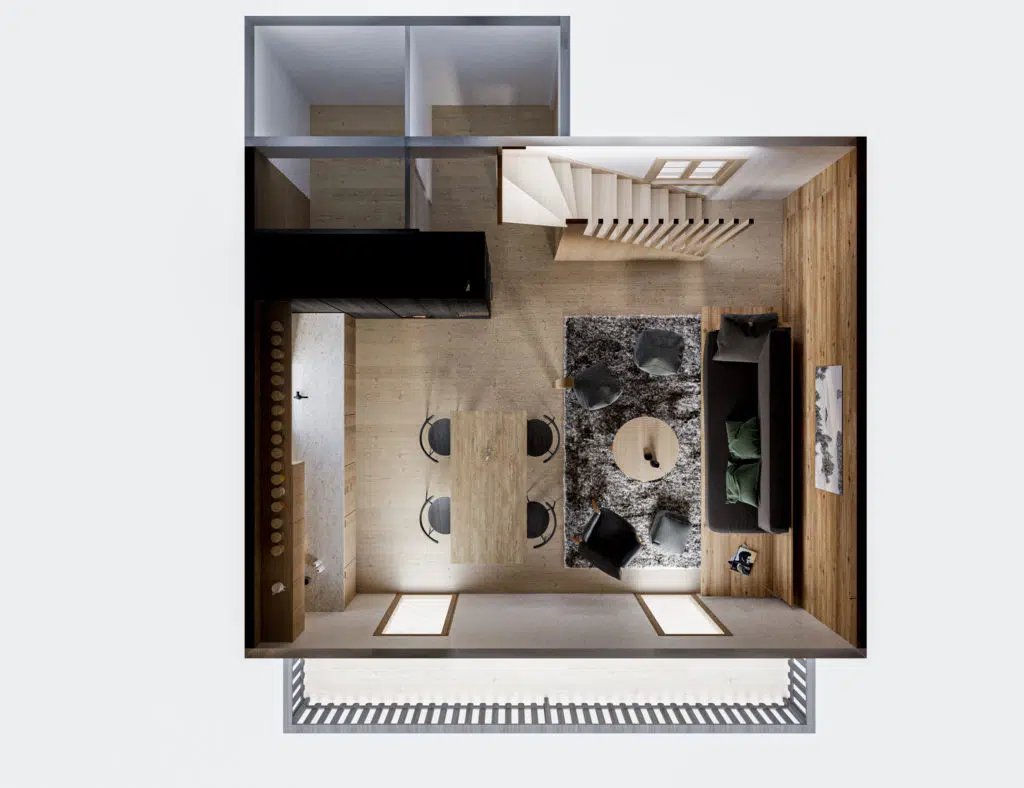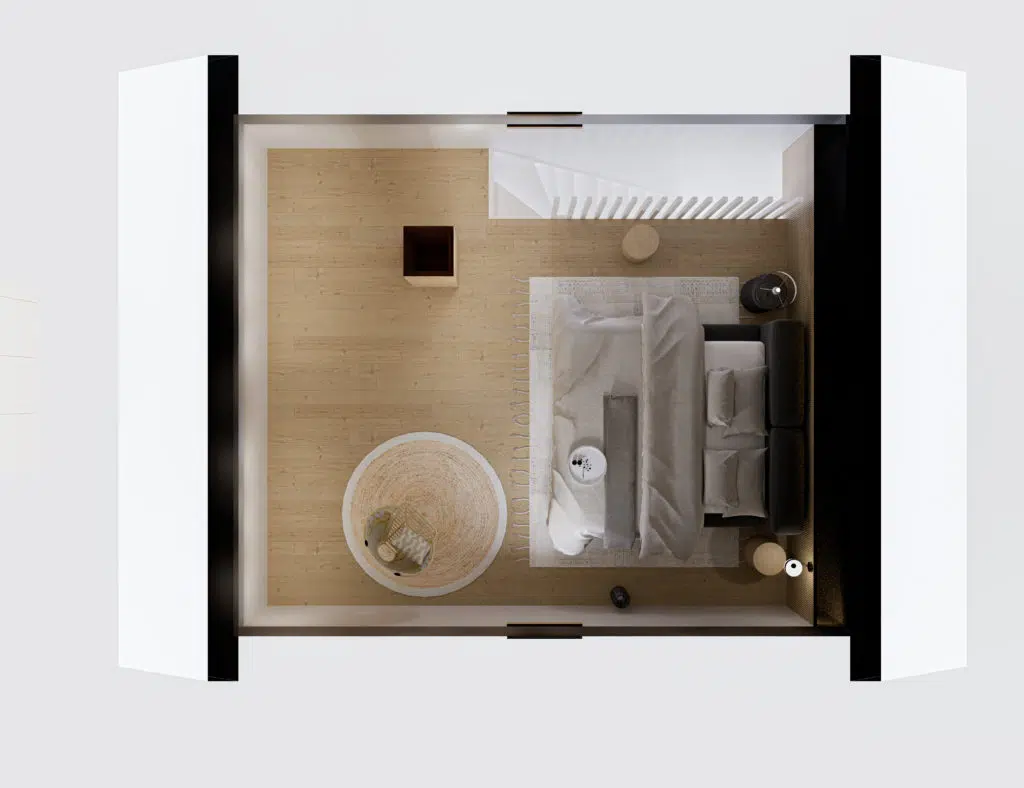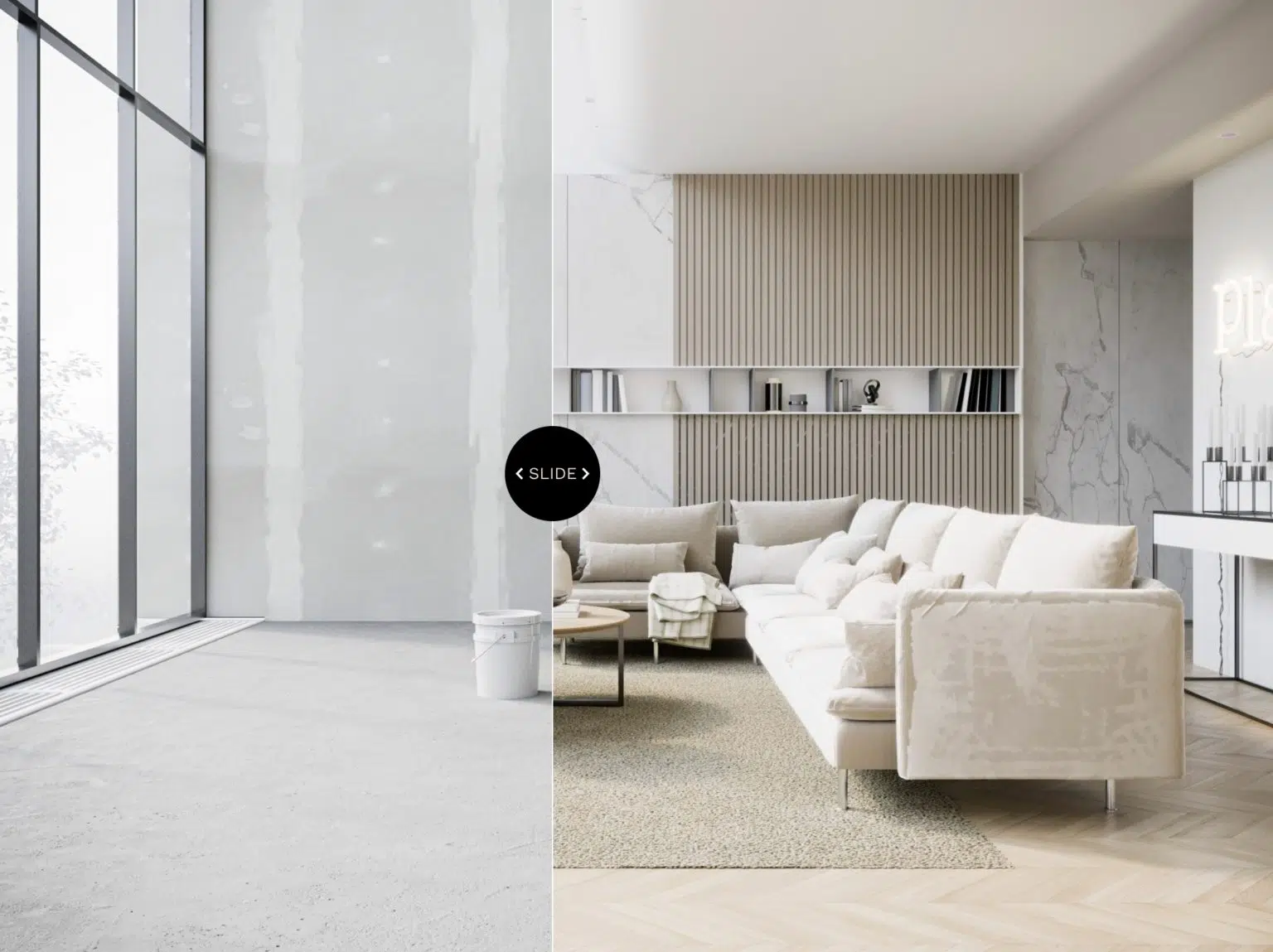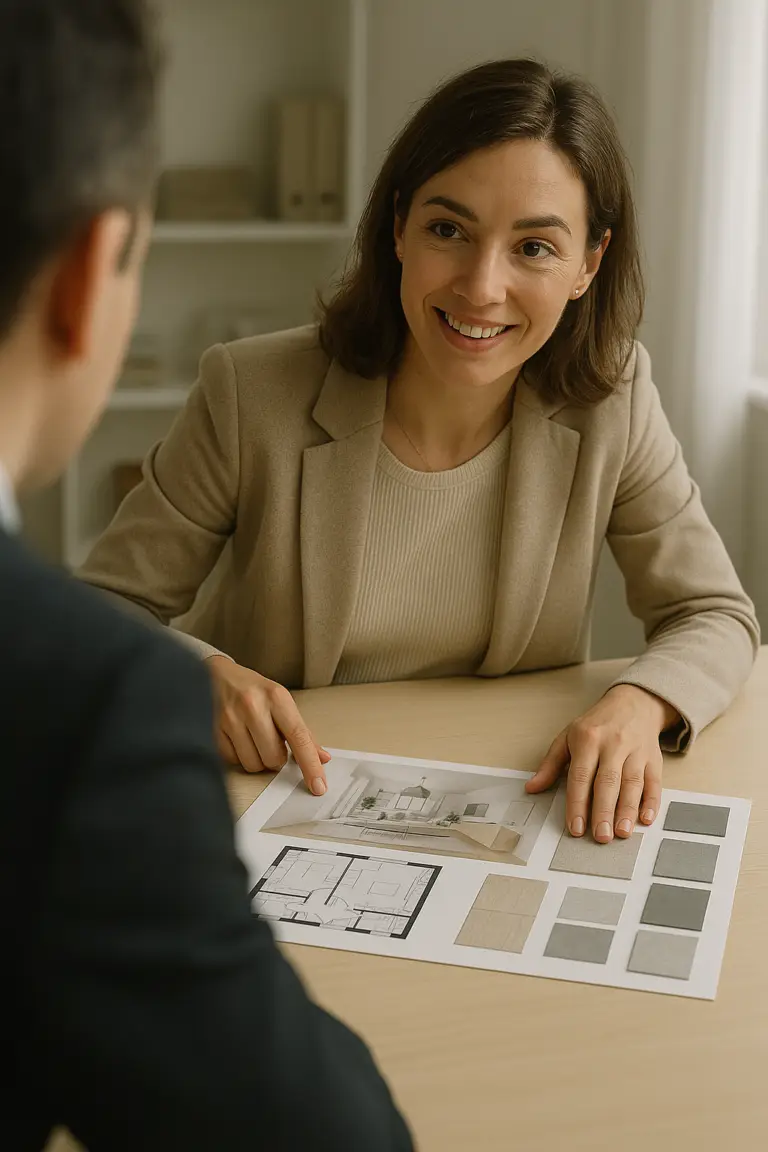Home staging has become an essential element in presenting a property in its best light and attracting potential buyers. With the advent of 3D visualisation, estate agents now have a powerful tool to virtually transform spaces and create immersive presentations that capture buyers' attention.
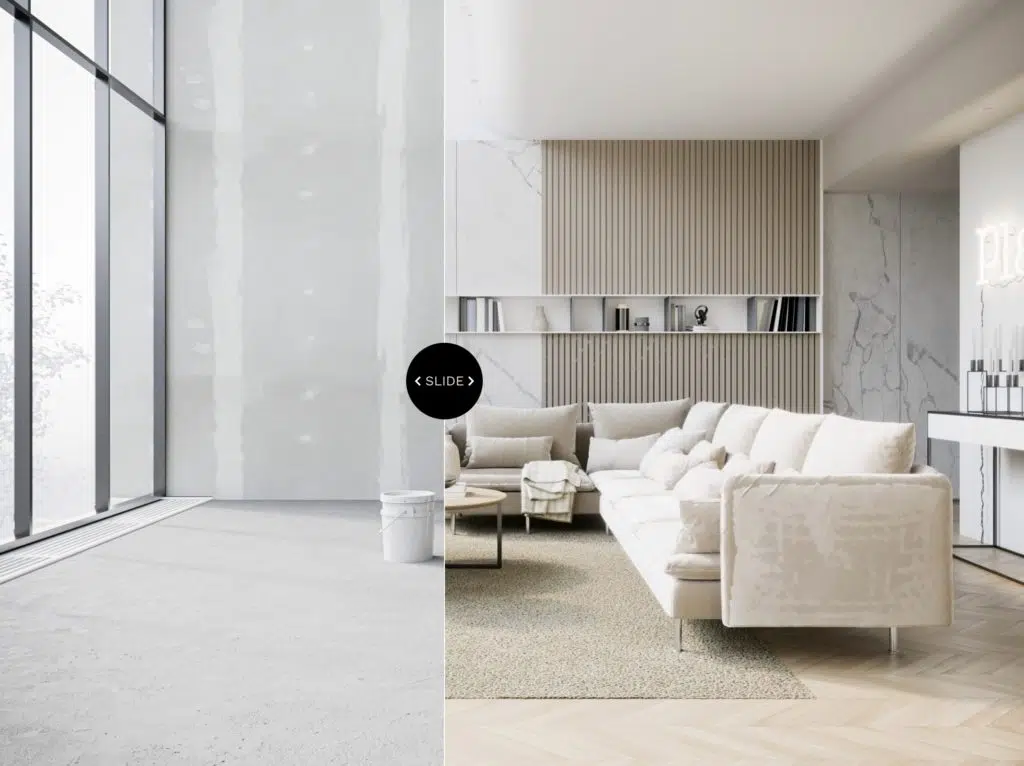
First of all, what is home staging?
Home staging is a real estate marketing technique designed to present a property for sale in its best light, highlighting its strengths and minimising its weaknesses, with the aim of attracting a greater number of potential buyers and selling the property more quickly and at a better price. This practice involves preparing and visually and aesthetically enhancing the appearance of a house or flat using interior design, space reorganisation and decoration strategies.
The home staging process often involves depersonalising the space by removing the seller's personal items, decluttering by removing everything that is superfluous and cumbersome, and staging the space by using furniture, accessories and decorative elements to create a welcoming and attractive atmosphere. The aim is to make it easier for potential buyers to see themselves in the property and feel at home.
Home staging can also include cosmetic improvements such as fresh paint, deep cleaning, repairing minor defects and enhancing the property's architectural features.
Now that we know what home staging is, let's talk a little about the figures
How much faster can you expect to sell your property thanks to home staging?
There are no universally accurate statistics on the exact percentage of guaranteed sales thanks to home staging in Switzerland, as this depends on many factors, such as the state of the local property market, the quality of the property, the skill of the estate agent, etc. However, according to various studies and reports, home staging is generally associated with a significant increase in the chances of selling a property and a reduction in the time spent on the market.
Here are some interesting figures on home staging and its potential effects:
- According to the National Association of Realtors (NAR) in the United States, homes that are staged sell on average 73% faster than those that are not.
- A study by the American Real Estate Institute found that for every dollar invested in home staging, sellers can expect an average return on investment (ROI) of $8 to $10.
- A survey conducted by the real estate magazine "Home Staging Resource" showed that 95% of staged homes sell in an average of 11 days or less, compared with a national average of 90 days for unstaged homes.
- In France, a study carried out by the online estate agency Seloger.com revealed that staged properties sell for an average of 18% more than unstaged properties.
These figures illustrate the significant impact that home staging can have on the process of selling a property by increasing its visual appeal, reducing the time spent on the market and maximising its potential value. Although the specific data for Switzerland may vary, these statistics provide an overview of the overall effectiveness of home staging in the real estate sector.
The power of first impressions :
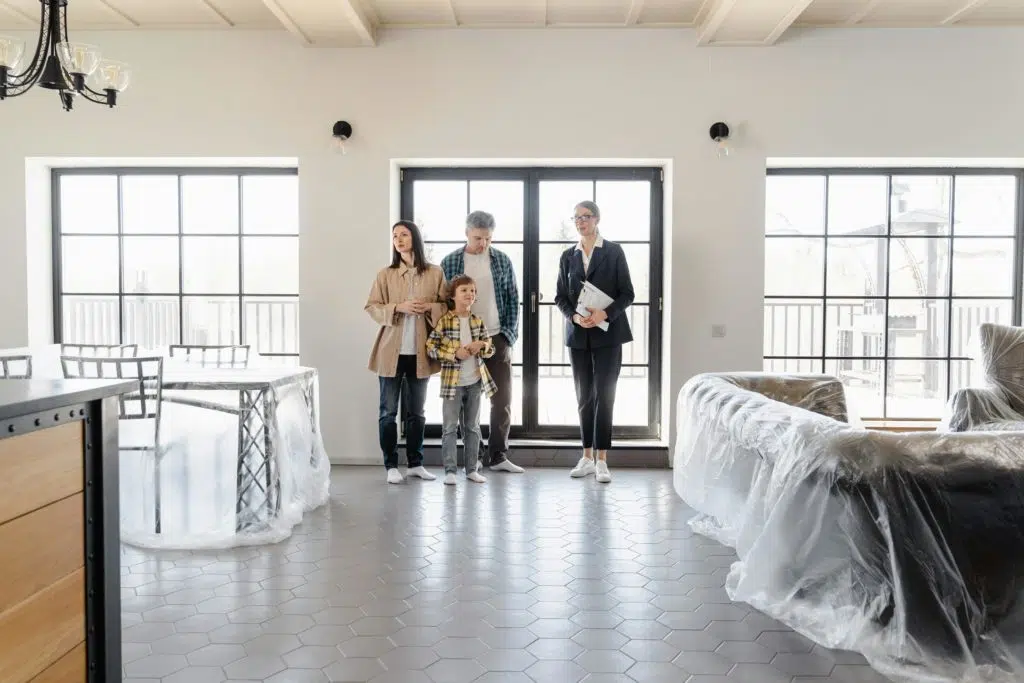
When a potential buyer visits a property for sale, the first impression they get can often play a decisive role in their buying decision. This first impression is crucial as it can determine whether the buyer is interested in exploring the property further or whether they move on. Home staging comes into play at this crucial stage by helping to create a positive and memorable impression at first glance.
By creating an atmosphere that allows potential buyers to project themselves into the property and feel at home, home staging can instil a sense of comfort, well-being and even desire in visitors. Well-organised, beautifully decorated and bright rooms can give the impression that the property is carefully maintained, spacious and welcoming, which can immediately capture buyers' attention and arouse their interest.
What's more, a property that is well presented through home staging can leave a lasting, positive impression in buyers' minds, which can influence their purchasing decision even after they have left the property. They are more likely to remember the property and seriously consider it among their potential options, which increases the chances of converting a simple visit into an offer to buy.
Adapting to market trends :
In an ever-changing property market, home staging plays a crucial role in adapting to emerging trends and the changing needs of potential buyers. With the rise of working from home and a growing concern for the environment, estate agents need to adjust their home staging strategies to meet these new demands.
Adapting to work spaces at home :
With the rise of teleworking, more and more potential buyers are looking for properties that offer dedicated spaces for working from home. Home staging can respond to this trend by highlighting functional and aesthetically pleasing home offices. This can include turning an extra bedroom into an office, creating an office corner in a communal space or even providing smart storage solutions to organise office supplies. By presenting practical solutions for teleworking, home staging can help attract buyers who are looking for homes that suit their professional lifestyles.
Adapt your decor to the latest trends:
Home staging can keep up with current decorating trends by keeping abreast of developments in interior design and adapting its techniques to reflect popular styles. Here are a few strategies for keeping up with the latest trends in home staging:
- Keeping an eye on trends: Find out about decorating trends using tools such as Pinterest and Instagram, or leave it to specialist professionals such as decorators, interior designers or home stagers to give your property a trendy look.
- Use of highlights: Incorporating design highlights or trendy decorative elements can help to give a modern, up-to-date feel to a property's presentation. This can include designer lighting, contemporary artwork, trendy rugs, or popular houseplants.
- Playing with colour palettes: Adapting the colour palette used in home staging to reflect colour trends can help give a property a modern, fashionable feel.
- Staging themed vignettes: Creating themed vignettes inspired by current decorating trends can help give the property a contemporary and stylish feel. This could include cosy reading nooks, outdoor relaxation areas with bohemian-style elements, or kitchen areas with accessories in modern or rustic-chic styles.
By adapting to current decorating trends, home staging can not only make a property more attractive to potential buyers, but also give it a competitive edge by presenting it in its best light and in line with current market tastes and expectations.
Home staging for different types of property:
Home staging is a flexible real estate presentation strategy that can be adapted to different types of properties to maximise their appeal to potential buyers. Here's how home staging techniques can vary depending on the type of property:
Detached house For a single-family home, home staging can focus on enhancing exterior features such as the façade, garden and outdoor living spaces. Inside, the focus can be on creating a warm and welcoming atmosphere, highlighting the living spaces, bedrooms and unique architectural features of the house.
Condominium flat : For a shared-ownership flat, home staging can focus on optimising the available space, with an emphasis on functionality and organisation. This can include the use of modular furniture, intelligent storage solutions and minimalist decoration to create a feeling of space and brightness.
Holiday Home : For a holiday home, home staging can aim to create a relaxed and inviting atmosphere that evokes the comfort and pleasure of holidays. This can include the use of bright colours and summery patterns, as well as highlighting indoor and outdoor entertaining areas.
Luxury Property : For a luxury property, home staging can focus on creating an upscale, sophisticated atmosphere that matches the lifestyle of wealthy potential buyers. This can include the use of high-quality materials, designer furniture and luxurious accessories to highlight the property's high-end features.
Property to renovate : For a property in need of renovation, home staging can play a crucial role in helping potential buyers visualise the property's potential. This can include highlighting original architectural features, depersonalising the space to allow buyers to project themselves and creating themed vignettes to inspire renovation ideas.
The emotional impact of home staging :
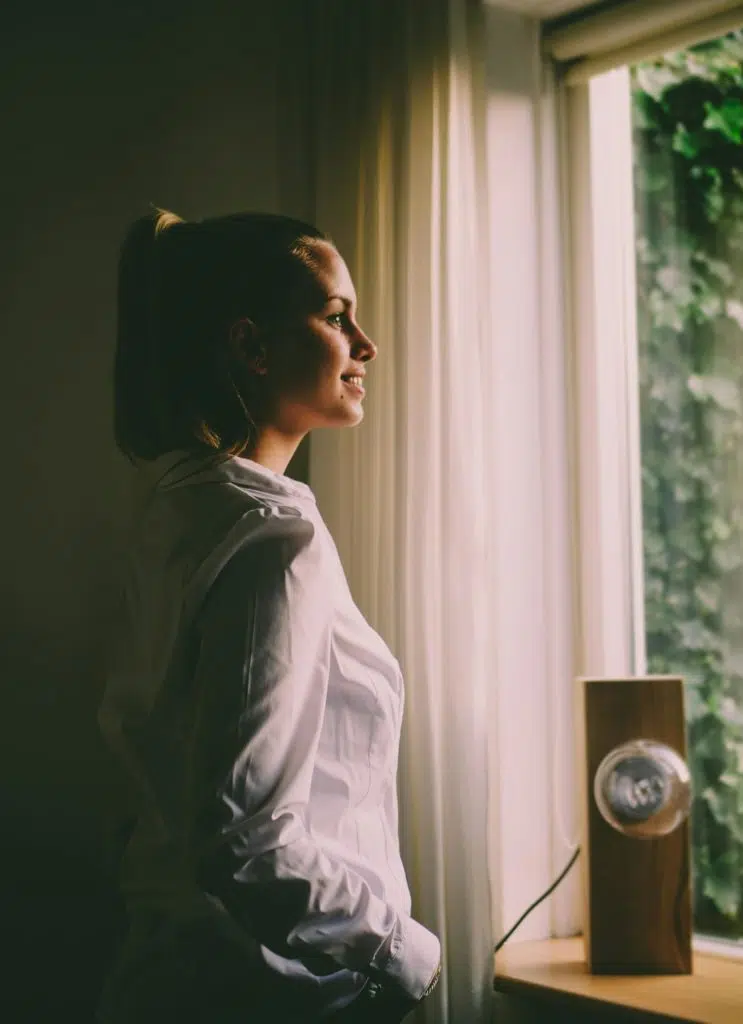
Home staging goes far beyond simply presenting a property aesthetically. In fact, it aims to create an immersive experience for potential buyers, arousing positive emotions and fostering a deep connection with the property. Here's how careful presentation can have a significant emotional impact on potential buyers:
Home staging goes far beyond simply presenting a property aesthetically. In fact, it aims to create an immersive experience for potential buyers, arousing positive emotions and fostering a deep connection with the property. Here's how careful presentation can have a significant emotional impact on potential buyers:
- Creating a welcoming atmosphere: Successful home staging can immediately welcome potential buyers into a warm and welcoming environment. The judicious use of light, colours, textures and decorative elements creates a pleasant atmosphere that invites visitors to explore the property with enthusiasm.
- Stimulating the senses: Home staging engages the senses of potential buyers by allowing them to see, smell and even imagine daily life in the property. Thoughtful furniture arrangements, subtle fragrances and decorative touches can evoke positive emotions and pleasant memories, strengthening their emotional connection with the property.
- Lifestyle projection: Effective home staging allows potential buyers to project their future life in the property. By highlighting functional living spaces, cozy nooks and attractive details, home staging can inspire buyers to envision how they might use the space to meet their personal needs and desires.
- Creating a story: Home staging can tell a story through the presentation of the property, highlighting its unique features and potential. Carefully chosen details, such as art pieces, decorative accessories and architectural elements, can evoke a story of life, adventure and possibility, capturing the imagination of potential buyers.
Ultimately, home staging aims to create genuine enthusiasm and an emotional connection with the property, which can encourage potential buyers to become emotionally invested in the buying process. By creating a memorable and meaningful experience, home staging can turn a simple visit into a genuine opportunity for potential buyers to fall in love with the property, greatly increasing the chances of a successful sale.
The role of lighting in home staging :
Lighting plays a crucial role in home staging as it can transform the look and feel of a property, highlighting its key features and creating a welcoming and attractive atmosphere for potential buyers. Here's a look at the importance of lighting in the presentation of a property and how strategic lighting can be used to maximise its impact:
- Accentuating key features: Lighting can be used to highlight the property's strong points, such as architectural features, design details and living spaces. Well-placed luminaires can draw attention to these features, creating visual focal points that captivate potential buyers from the moment they arrive.
- Setting the mood: Lighting can help create a specific atmosphere in every room of the property. A variety of lighting options, such as ceiling lights, wall lights, floor lamps and table lamps, can be used to adjust the mood as required, whether to create a warm, intimate atmosphere in the living room or a bright, energising ambience in the kitchen.
- Improving the perception of space: Well-planned lighting can help make living spaces more spacious and welcoming. The use of soft, diffused lighting can soften the contours of rooms, while directional lighting can emphasise the dimensions and depth of the space, creating a feeling of openness and grandeur.
- Correcting faults: Lighting can also be used to correct aesthetic faults in the property. For example, well-placed lighting can soften dark or poorly lit areas, masking imperfections and highlighting the positive aspects of the property.
- Increasing visual appeal: Strategic lighting can make a property more attractive and memorable to potential buyers. Creative lighting solutions, such as accent lighting to highlight decorative features or mood lighting to create a relaxing atmosphere, can generate excitement and interest among visitors.
The Advantages of 3D Visualisation in Home Staging :
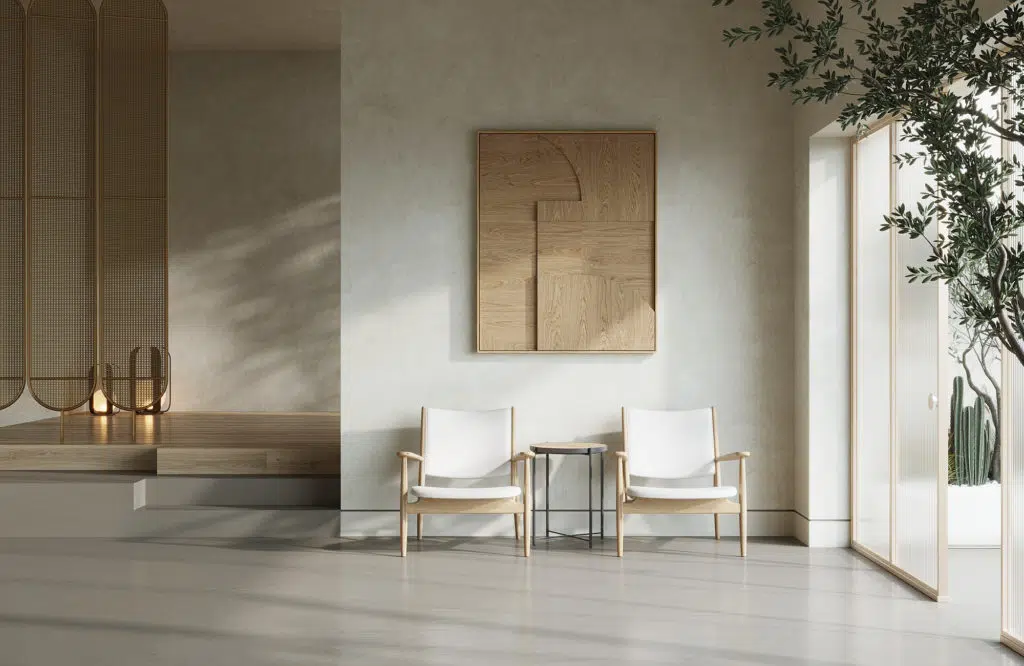
- Realistic presentation: 3D visualisation can be used to create hyper-realistic renderings that show buyers what the property would look like once furnished and decorated. This helps buyers project themselves into the space and feel at home.
- Customisation: With 3D visualisation, estate agents can experiment with different furniture configurations, colours and textures to find the best combination for each property. This makes it possible to create bespoke presentations tailored to the needs and preferences of potential buyers.
- Saving time and money: By using 3D visualisation for home staging, estate agents can avoid the costs and hassle associated with renting real furniture and physically setting up spaces. It also speeds up the marketing process by reducing the time needed to prepare a property for sale. Imagine having to take the time to depersonalise a property, remove decorations, fill holes, repaint or even furnish the property. All this takes organisation, time and money. With 3D images the result is instantly visible, saving you energy, time and money for more essential tasks such as prospecting. Free yourself from this burden and move towards your objectives more quickly.
- Highlighting features: 3D visualisation helps to highlight a property's unique features, such as architecture, natural light and panoramic views. This helps to attract the attention of potential buyers and highlight the property's strong points.
- Flexibility: With 3D visualisation, estate agents can easily make changes and adjustments to home staging presentations based on customer feedback or changes in the property market. This means they can adapt quickly and effectively to changing needs.
- By integrating 3D visualisation into their home staging strategies, estate agents can offer their customers an immersive and personalised experience that brings their properties to life in a unique and attractive way. This not only maximises the appeal of properties for sale, but also enhances the reputation and credibility of the estate agency as a leader in innovation in the sector.
What are the advantages and disadvantages of real home staging and virtual home staging? We tell you all about it here:
Virtual home staging, using 3D visualisation software, and traditional home staging with real furniture are two distinct approaches to preparing a property for sale. Each has its own advantages and disadvantages, and the choice between the two often depends on the seller's specific needs, the budget available and the requirements of the local property market.
Virtual home staging (3D visualisation) :
Advantages :
- Flexibility: Virtual home staging offers maximum flexibility by allowing designers to easily experiment with different furniture configurations, colours and styles without the need for real furniture. This allows the presentation of the property to be quickly adapted to the needs and preferences of potential buyers.
- Cost: Virtual home staging can be less expensive than traditional home staging with real furniture, as it eliminates the costs associated with buying, renting and transporting real furniture. This can be particularly advantageous for large properties or properties located in remote geographical areas.
- Realism: High-quality 3D renderings can create realistic, immersive images that make it easy for potential buyers to project themselves into the space. Realistic details, such as natural lighting, material textures and perspectives, can help create a convincing impression of the property.
Disadvantages :
- Lack of tactile sensation: Unlike traditional home staging with real furniture, 3D visualisation does not allow potential buyers to physically feel the space and objects presented. This lack of tactile sensation can sometimes limit buyers' emotional involvement and make it more difficult for them to project themselves into the property. However, there is a solution to this problem: 360° visits or VR.
There are many advantages to a 360° visit or virtual reality (VR) for a home staging project:
- Immersive experience: 360° visits and VR offer potential buyers an immersive experience, allowing them to explore the property virtually as if they were physically there. This gives them a better understanding of the space and allows them to feel more engaged in the visit.
- Realistic projection: Thanks to immersive technology, 360° visits and VR provide a realistic representation of reworked spaces. Buyers can accurately visualise the changes made to the property, making it easier for them to make their decision.
Traditional home staging with real furniture:
Benefits:
- Tactility: Traditional home staging with real furniture offers a tactile and sensory experience for potential buyers, which can help them feel more emotionally connected to the property. They can see, touch and feel the space directly.
- Realism: Real furniture gives the property an authentic and natural feel, which can help potential buyers to project themselves more easily into the space and visualise their daily life in the property.
Disadvantages:
- Cost: Traditional home staging with real furniture can be more expensive because of the costs associated with buying, renting and transporting the furniture, as well as the fees of the staging professionals.
- Space limitations: Real furniture can sometimes limit the perception of space and make rooms seem smaller or more cluttered than they really are, which can make the property less attractive to some potential buyers.
- Logistics and time: A major disadvantage of home staging is the time and logistics involved in preparing a property for showing. The process of depersonalising, rearranging and staging the property can be time-consuming and requires careful planning. In addition, coordinating the various aspects of home staging, such as renting or buying furniture, planning renovation work, thorough cleaning and decorating, can be a complex task. Delays in implementing home staging can also affect the time it takes to market the property and delay the completion of real estate transactions. As a result, it is essential for home staging professionals to manage time and logistics effectively to ensure the success of each project.
In summary, the choice between virtual and traditional home staging will depend on the seller's individual preferences, the requirements of the local property market and budgetary constraints. Each approach offers its own advantages and disadvantages, and a thorough analysis of the property's specific needs can help determine the best option for maximising its appeal and value on the market.
Case studies
Furnishing a 2.5-room apartment to rent
This initially empty flat was transformed using 3D visualisation to offer a more vivid vision of the project and allow future tenants to better project themselves into the space. At first glance, the images without furniture lacked appeal, not allowing a good perception of the spaces and their potential, especially as the floor coverings and kitchen were not the most recent.
By introducing beige furniture, large light-coloured carpets and decorative light fittings, the space has become clearer, more modern and brighter. This touch of freshness has enabled customers to better interpret the spaces and make them their own more easily. They can now visualise how their day-to-day lives could fit in harmoniously with this well-designed, welcoming environment.


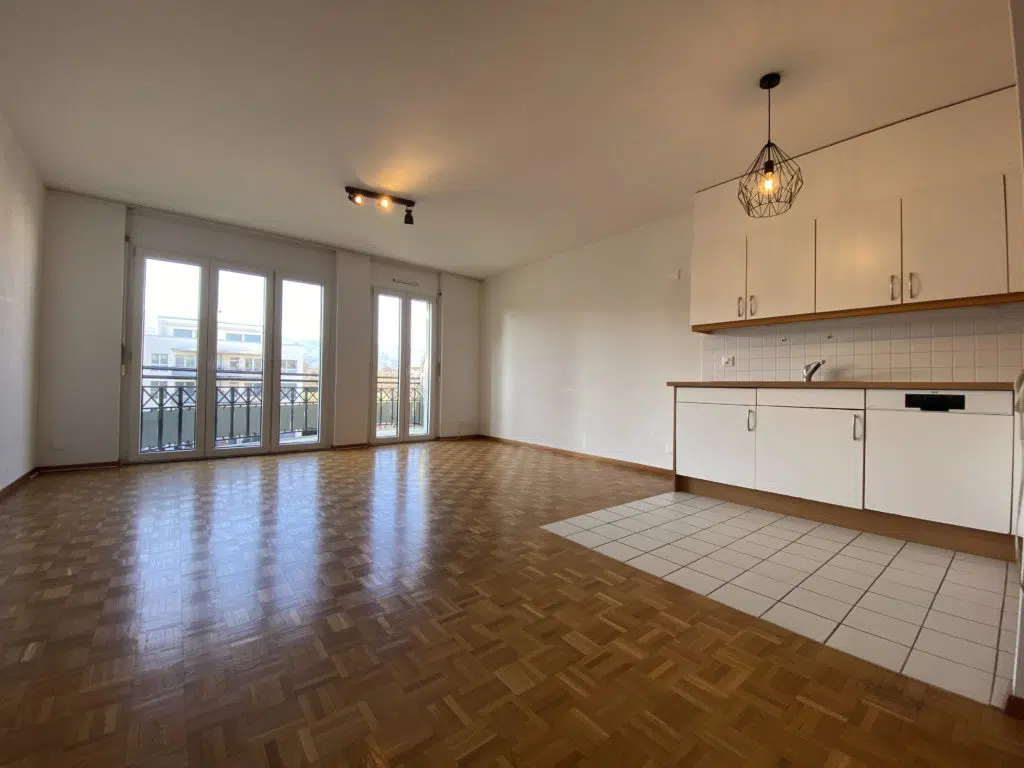
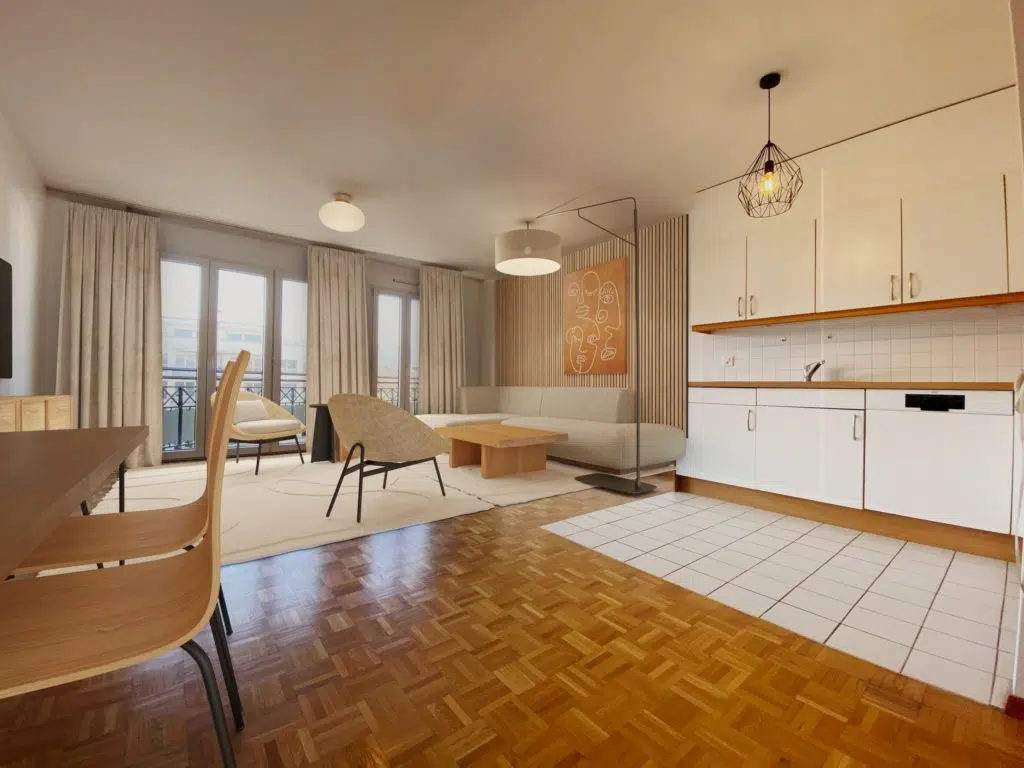
Renovating and fitting out a living room for sale
The outdated style of this living room, with its heavy, imposing and dark furniture, is not conducive to selling. It gives the space a dark, narrow and cluttered feel. However, thanks to 3D visualisation, the potential of this living space was revealed after a few small jobs were carried out virtually. The room is now lighter and brighter, offering a refreshed atmosphere. By opting for neutral, bright and timeless furniture, in line with current trends, this living room has received a real facelift. These 3D images will ensure a much more attractive advert, increasing the click-through rate by 50% compared with the previous image, because they capture more attention.


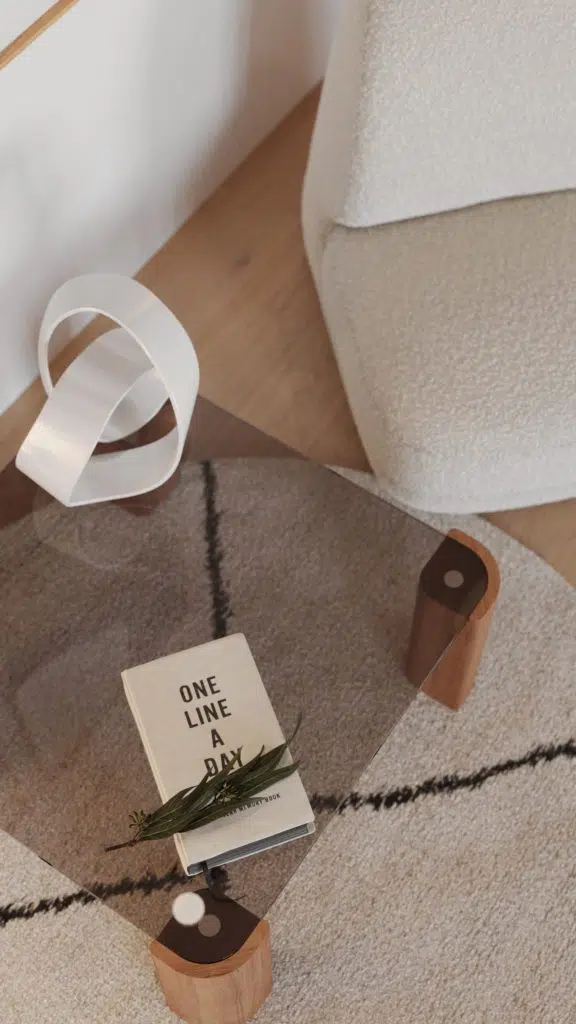
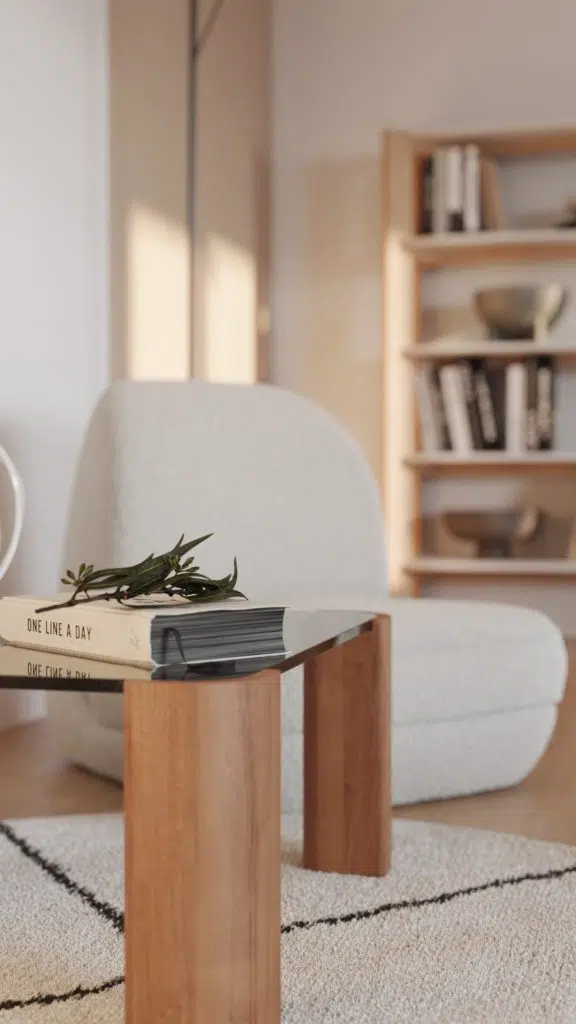
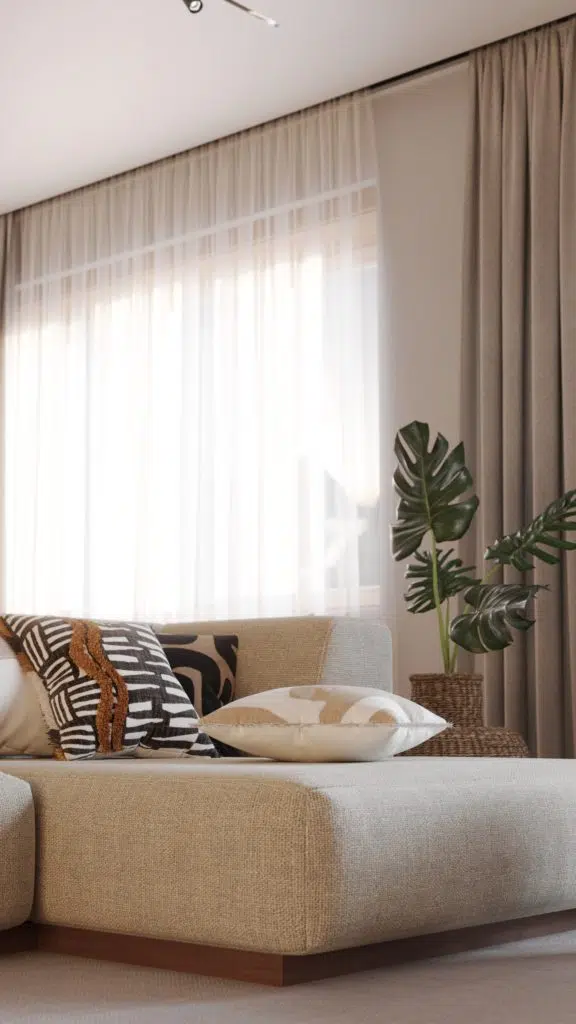

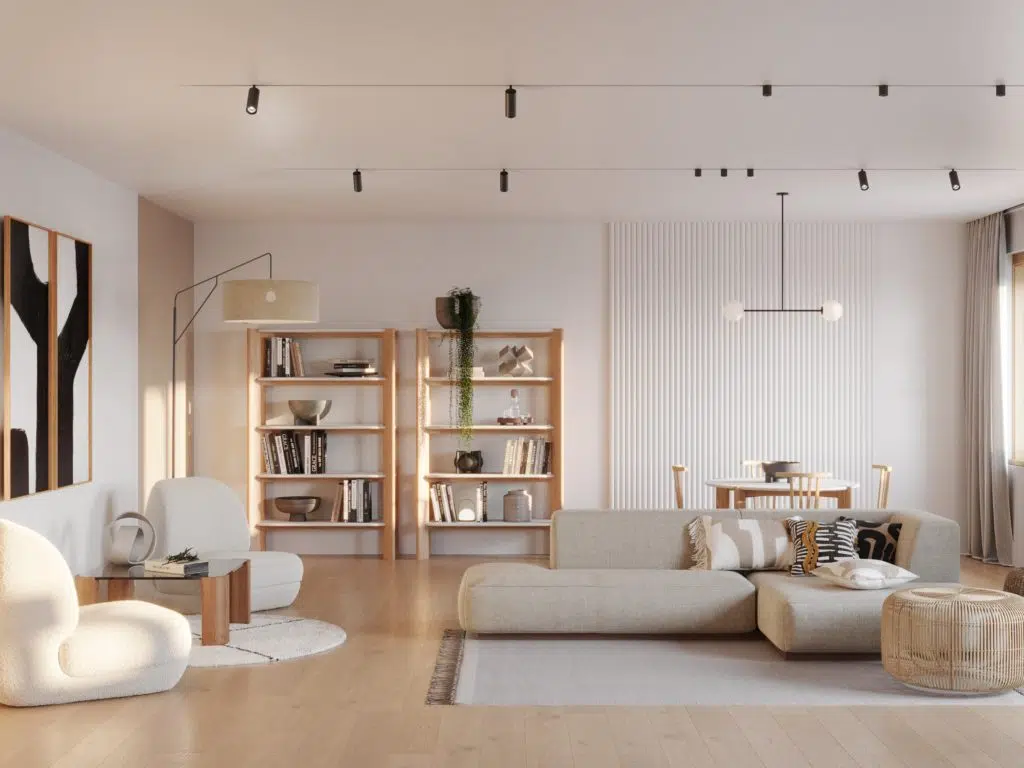
Renovating a chalet using 3D
This chalet underwent a complete virtual renovation with the aim of optimising its spaces. We rethought the layout of each room to make them more functional and attractive. The entire interior concept was rethought to enhance the value of this chalet, without requiring the slightest investment in physical renovation. This type of virtual intervention can considerably increase the appeal of the advert and facilitate the sale for people who are reluctant to undertake work or who find it difficult to project themselves into a property in need of renovation. These images offer reassurance and reveal the true potential of the property, reassuring potential buyers about its final appearance.
Read the full case study article for this chalet:

